This final instalment of the recent trip to Venice for a couple of days of the art biennale focuses on the wider events in the city.
Throughout Venice there are exhibitions, shows and performances as part of the Biennale. They are tucked into hidden corners, upstairs and down, inside purpose-built structures and centuries-old edifices. It is one of the delights of the event to wander through alleyways and canal-lined paths, stumbling upon some unexpected treasures.
On the waterfront sits the Arsenale Institute for Politics of Representation in Venice. This lovely building is currently playing host to South African, William Kentridge, who created Self-Portrait as a Coffee Pot during and after lockdowns in the Covid-19 pandemic. The exhibition partially recreates the studio where nine thirty-minute videos were shot, and incorporates dance, costume, props, drawing, music, animation, opera, sound and sculpture in a witty, playful and thoughtful exploration of art and artistry. In this digital age – these videos are ultimately intended for online, television or mobile viewings – where Artificial Intelligence may have the power to consume and subsume thought and feeling, what is the role of and artist in making art, of the solitary act of creating, of collaboration? It is a joyful and celebratory show.
A few blocks away a small exhibition from Uganda, We Are One, in Bragora Gallery is fascinating, if a little disjointed. Thirty-one African artists and artisans have produced pieces ranging from an encyclopedia of woven designs shown as a collection of baskets to upcycled wedding gowns that incorporate barkcloth, shell, paperbeads and other material. Some of these pieces are part of a performance that parades through Venice inviting audience participation.
Chiesa di San Fantin, a 10th Century parish church, plays host to Reza Ramesh, the Iranian-born artist based in London and New York. The artist portrays conflict, caused by war, race or sexuality, in two complementary collections. The Site of the Fall: Study of the Renaissance Garden is a series of marble sculptures of Asian, Middle Eastern and African working-class men, posed as Saint Sebastian. They reflect the antique artworks in the church that portray punishment and reformation. The sculptures are sensuous and erotic, a direct contrast to the brutality that the sitters have endured.
In Number 207, 207 life-sized marble carvings of underwear are scattered, like petals, along the central aisle in the church. Each piece denotes a detention centre…
Zimbabwe too has a show in a church building – Santa Maria della Pietà. In this show, Undone, the exploration of ideas of the unravelling of the world offers alternative visions such as Moffat Takadiwa’s works (below) that use pieces found in landfill (computer keys and toothbrushes) to create sculptures and artworks.

Nearby is the Ethiopian pavilion. Curated by Leon Sissay, Tesfaye Urgessa presents large-scale, colour-filled and marvellous paintings of people and places. A fantastic way to finish our exploration of Venice’s Biennale.
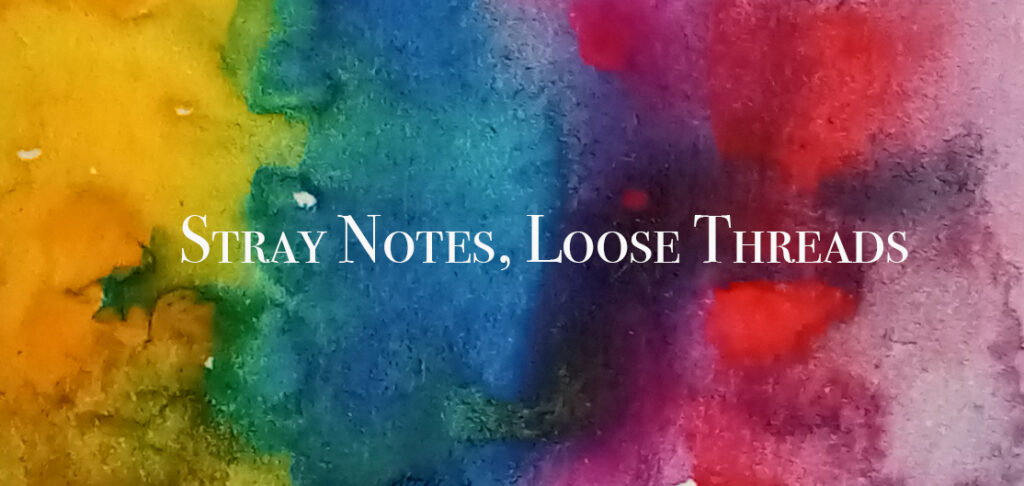
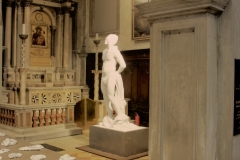
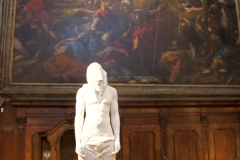
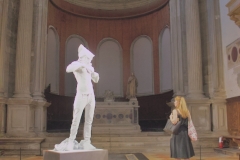


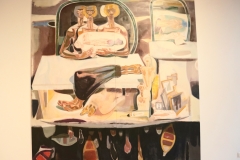
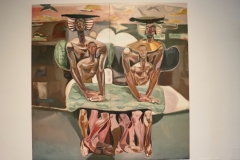


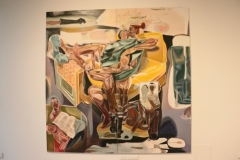

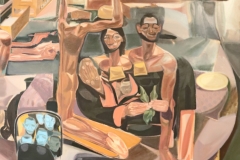
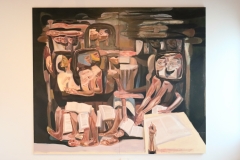
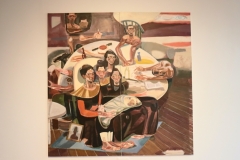
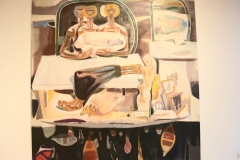
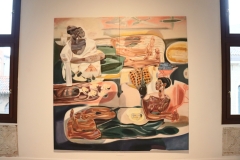
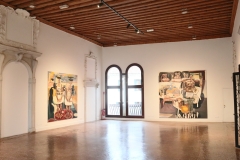

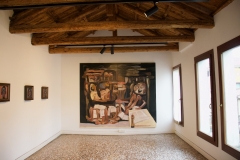
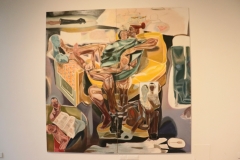

Leave a Reply